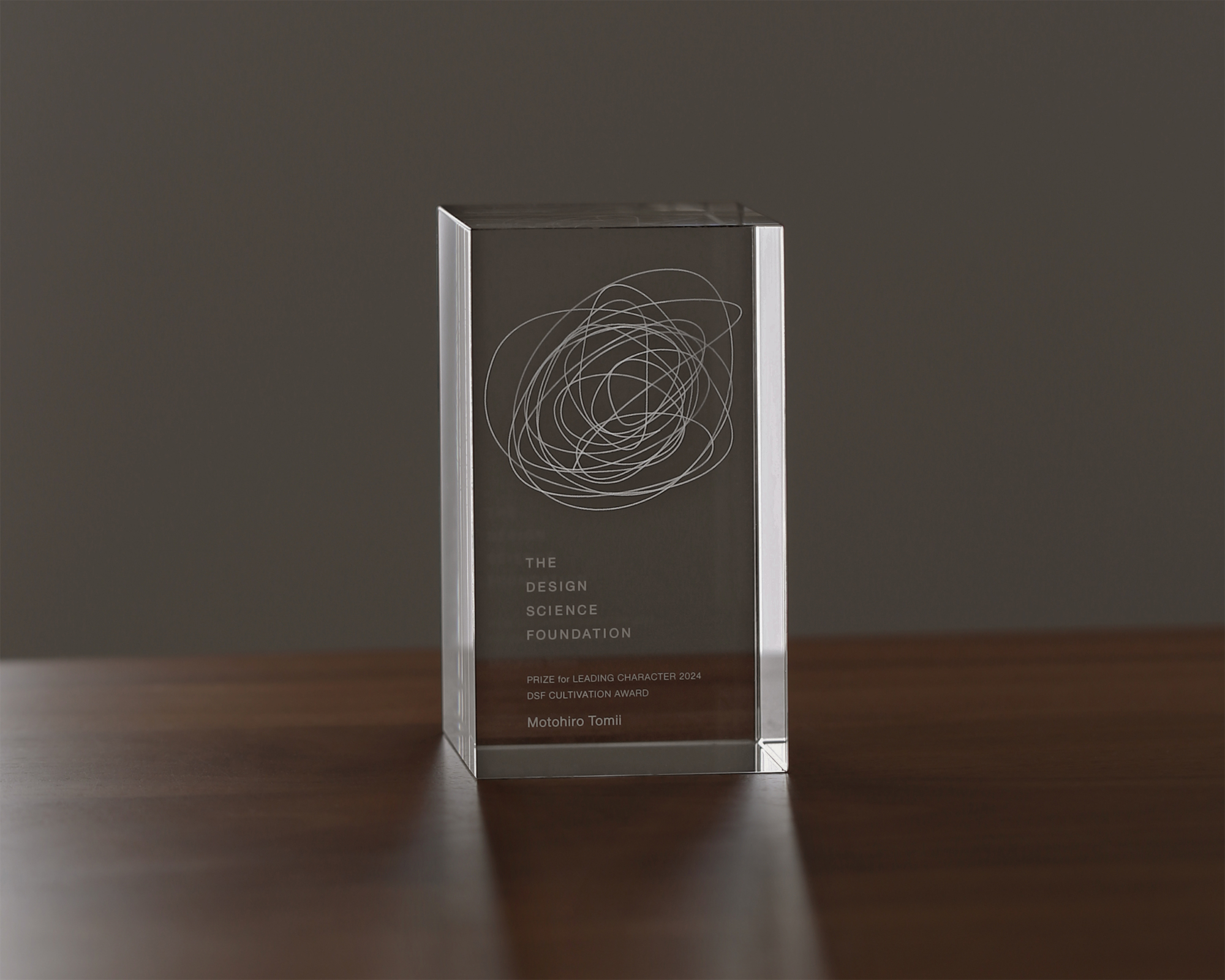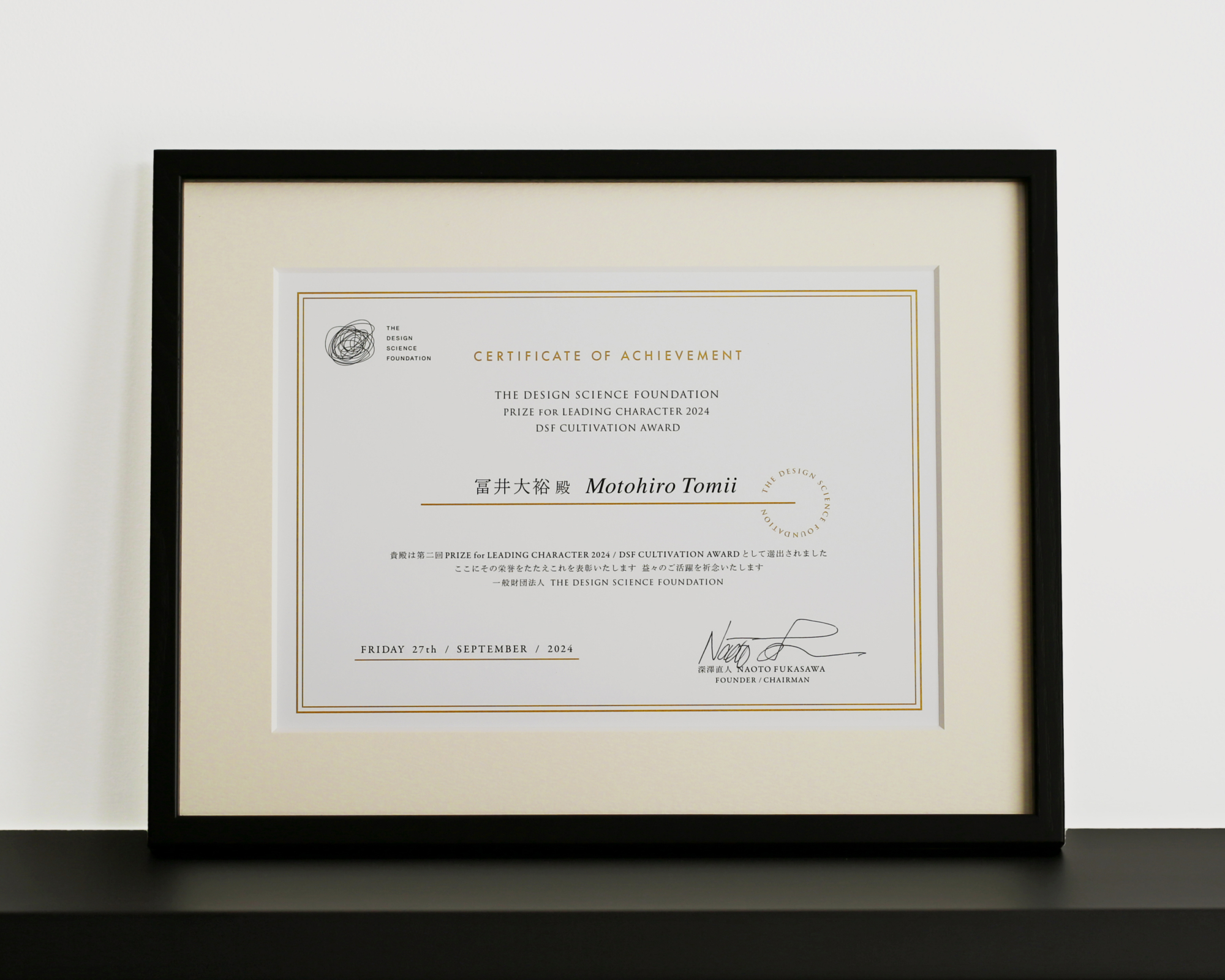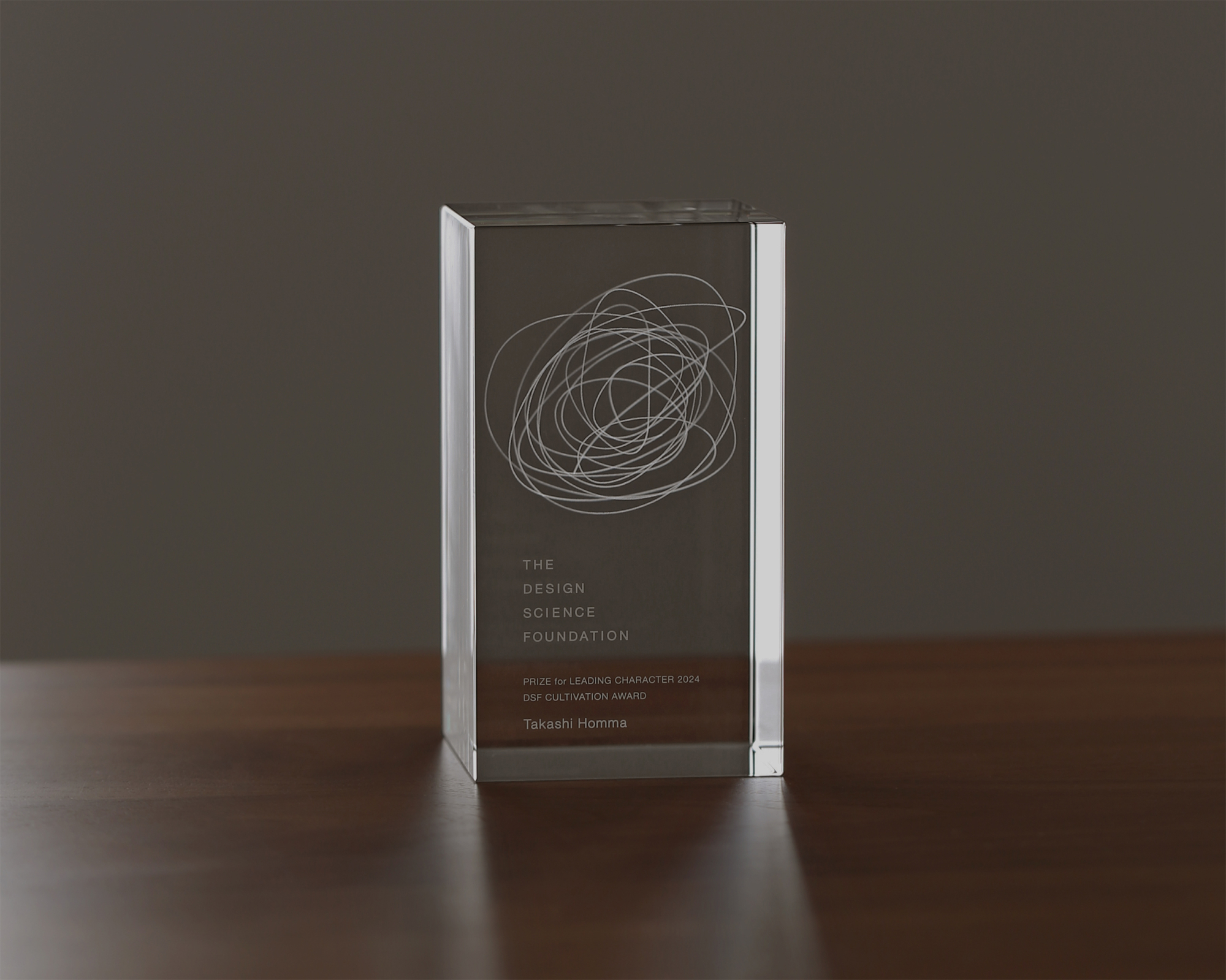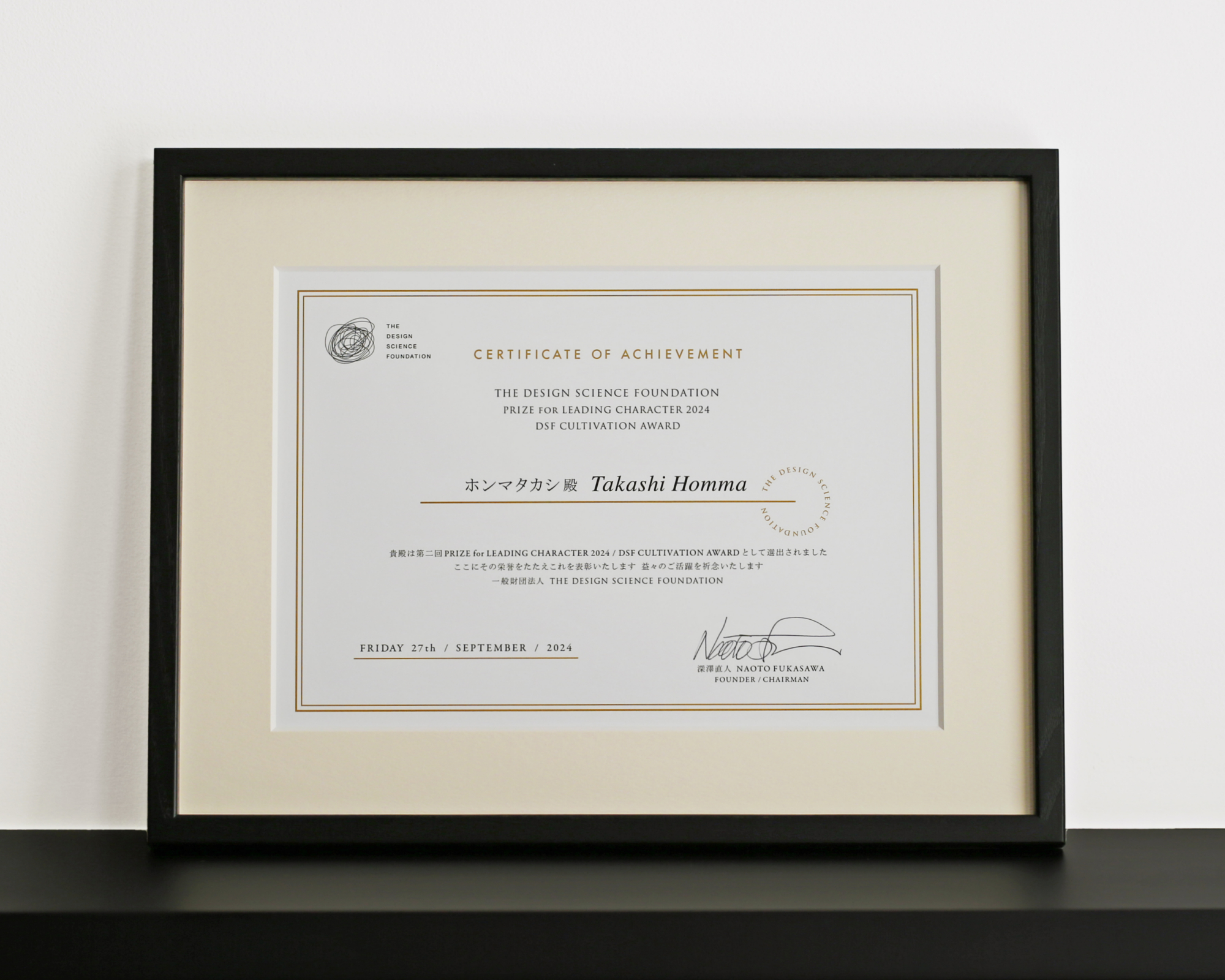DSF Cultivation Award
New creations are born from the connection between design and science.
By praising and supporting the protagonists who have produced these fruits, we aim to lead the world toward a beautiful one.
Selection Results
THE DESIGN SCIENCE FOUNDATION
PRIZE for LEADING CHARACTER 2024
DSF CULTIVATION AWARD
Motohiro Tomii
DSF CULTIVATION AWARD
Artist
Summery of Activities
Motohiro Tomii has a firm grasp of events that everyone knows about but overlooks. Its arrangement of what everyone perceives with their senses, exactly as it is perceived by those senses, is the aggregation of new human awareness. There is not much point in analyzing and sharing that value there. That behavior is nothing more than an attitude of not seeing and ignoring the fact that what his sensitivity receives is the same as what each of us perceives. His works reawaken and return to the place of origin such memories enclosed within the human being, which move back and forth between the conscious and the unconscious. His activities are simply an honest take on these kinds of perceptions.
2023 Exhibition “Daily ShapesーExhibition of Motohiro Tomii” (Tochigi Prefectural Museum of Fine Arts)
2023 Exhibition “Motohiro Tomii Time to watch” (Niigata City Art Museum)
2015-16 Stayed in New York as a trainee under the Agency for Cultural Affairs’ Overseas Study Program for New Artists
2011 Exhibition “Re-Modernologio phase2: Observation and notation” (Aomori Contemporary Art Centre)
2000 The Winner of The 4th contest for the best contemporary art work 2000 Grand Prix
From the Jury,
Sometimes we see it, but we don’t recognize it. We sometimes touch it but don’t feel it. It is natural that people’s consciousness and sensors are not linked, but Tomii’s work exposes this link. He silently surprises us by revealing forces and vibrations that are clearly present in the air. The cilia of our consciousness are fluffed up by the traces of the act. The sympathetic joy of noticing opens our eyes with “???!” This type of pleasure is hard to define. But surely objects, environments, and circumstances generate human action. To evoke one’s “awareness” is to know oneself and the world. What Tomii sees is invisible to us.
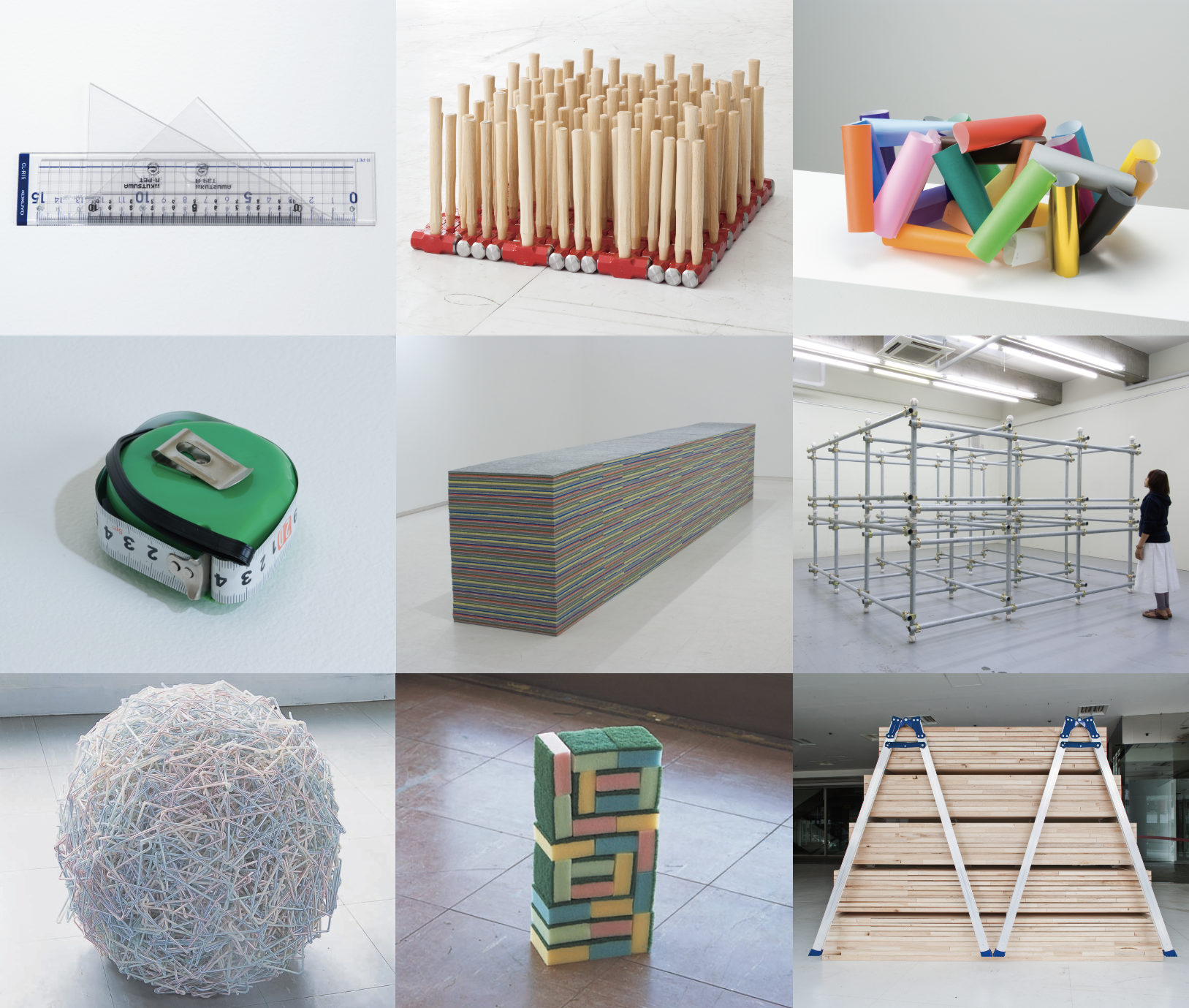
©Motohiro Tomii, Courtesy of Yumiko Chiba Associates
Top left: four rulers / 2010 / ruler / Photo: Masaru Yanagiba
Top middle: woods#3 / 2011 / hammer / Photo: Shinya Kigure
Top right: roll (27paper foldings)#3 / 2009 / origami, stapler / Photo: Masaru Yanagiba
Center left: measure / 2009 / tape measure / Photo: Masaru Yanagiba
Center middle: four color carpets / 2011 / tiled carpet / Photo: Masaru Yanagiba
Center right: ball pipe ball (2 stories) / 2010 / baseball for hardball baseball, single pipe, single clamps / Photo: Masaru Yanagiba
Lower left: joint (ball) / 2005 / straw / Photo: Tamotsu Kido
Lower center: bricks / 2004 / sponge / Photo: Tamotsu Kido
Lower right: hills / 2011 / stepladder, plywood / Photo: Shinya Kigure
Takashi Homma
DSF CULTIVATION AWARD
Photographer
Summery of Activities
He is known for his lyricism-free photographic works, in which he captures, from a certain distance, the scenery and people of Tokyo’s suburbs, where uniform development by government agencies and developers is proceeding. In 2023, he presented “Revolution 9: Takashi Homma” at Tokyo Photographic Art Museum, his first solo exhibition in Japan in nearly a decade. Here he presented a number of works in which he photographed cities around the world, using a room in an architectural structure as a pinhole camera. Takashi Homma describes this as “photographing the city by the city.
2023 Exhibition “Revolution 9 : Takashi Homma” (Tokyo Photographic Art Museum)
2011-12 Large-Scale Solo Exhibition “New Documentary”
(Touring 21st Century Museum of Contemporary Art, Kanazawa、Tokyo Opera City Art Gallery、Marugame Genichiro-Inokuma Museum of Contemporary Art)
1999 The Winner of 24th Kimura Ihei Award
From the Jury,
Takashi Homma has taken visual design science in two new directions.
The first is the production of photographs with a camera obscura (pinhole camera), which has its origins in BC. In “Revolution 9: Takashi Homma” (2023) at the Tokyo Photographic Art Museum, a number of works were exhibited in which entire rooms in cities around the world were used as cameras, and color films were exposed to “raw light” that entered through holes in the walls without using lenses or shutters (Figure 1). “Ambient Light (Light only in that place)” itself became the theme of the photograph.
Second, he pointed out the “duality of perception,” which states that the visual perception of a photograph is not only the image, but also the visual perception of the frame, the texture of the glass surface, and so on. (Figure 2, From a paper published in Journal of Ecological Psychology in 2023.) He pointed out that the meaning of a photograph, which is a surface but also shows information about the image, lies in the simultaneity of multiple visuals.
The work of Takashi Homma, who shows the future of visual design science by changing the visual perception of photography, is highly commendable.
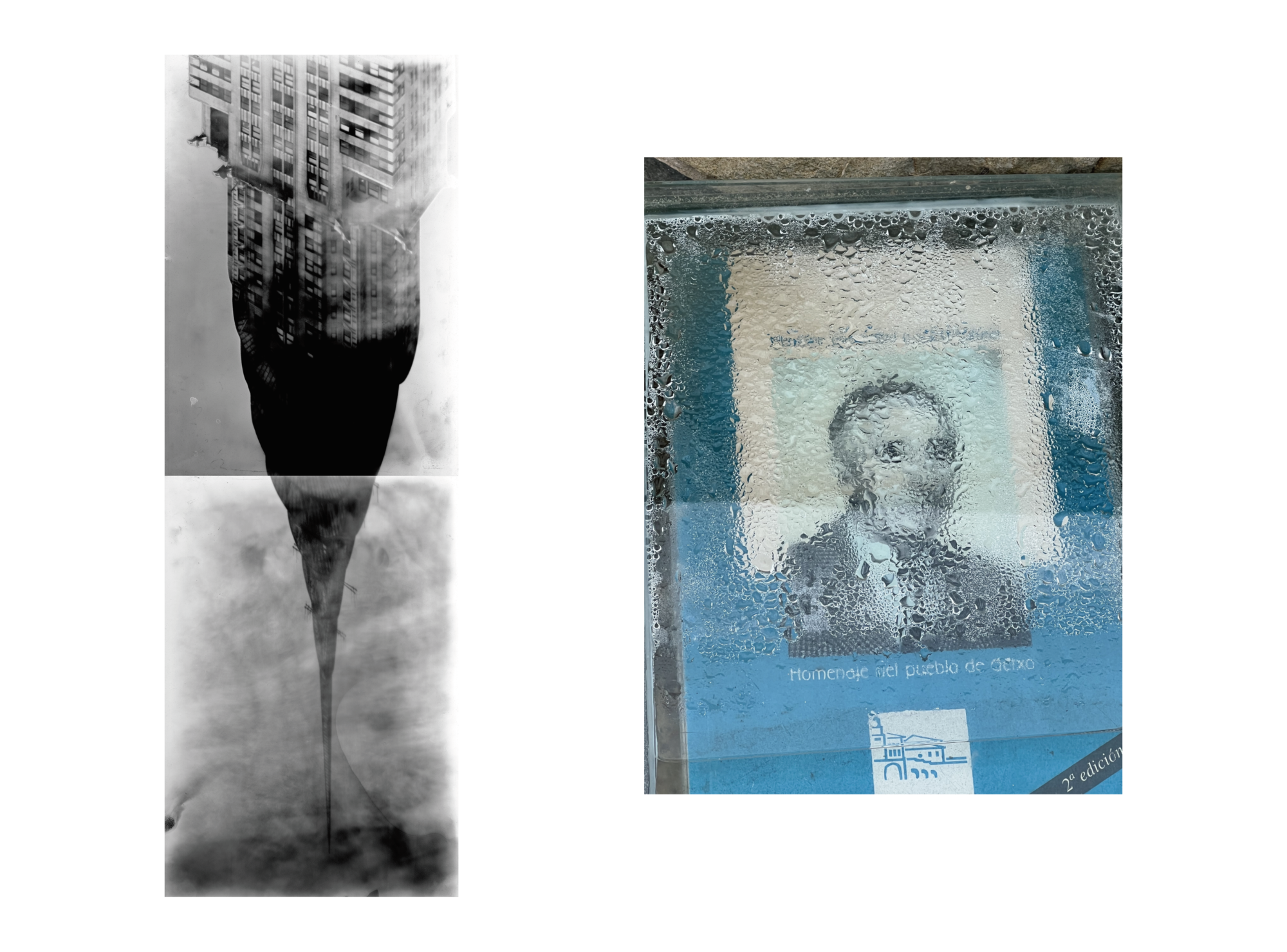 (Left) Figure1: New York / 2015 / From “THE NARCISSISTIC CITY” / ©Takashi Homma
(Left) Figure1: New York / 2015 / From “THE NARCISSISTIC CITY” / ©Takashi Homma
(Right) Figure2: Getxo. Spain / 2022 / ©Takashi Homma / Photo caption taken from a statue in Spain
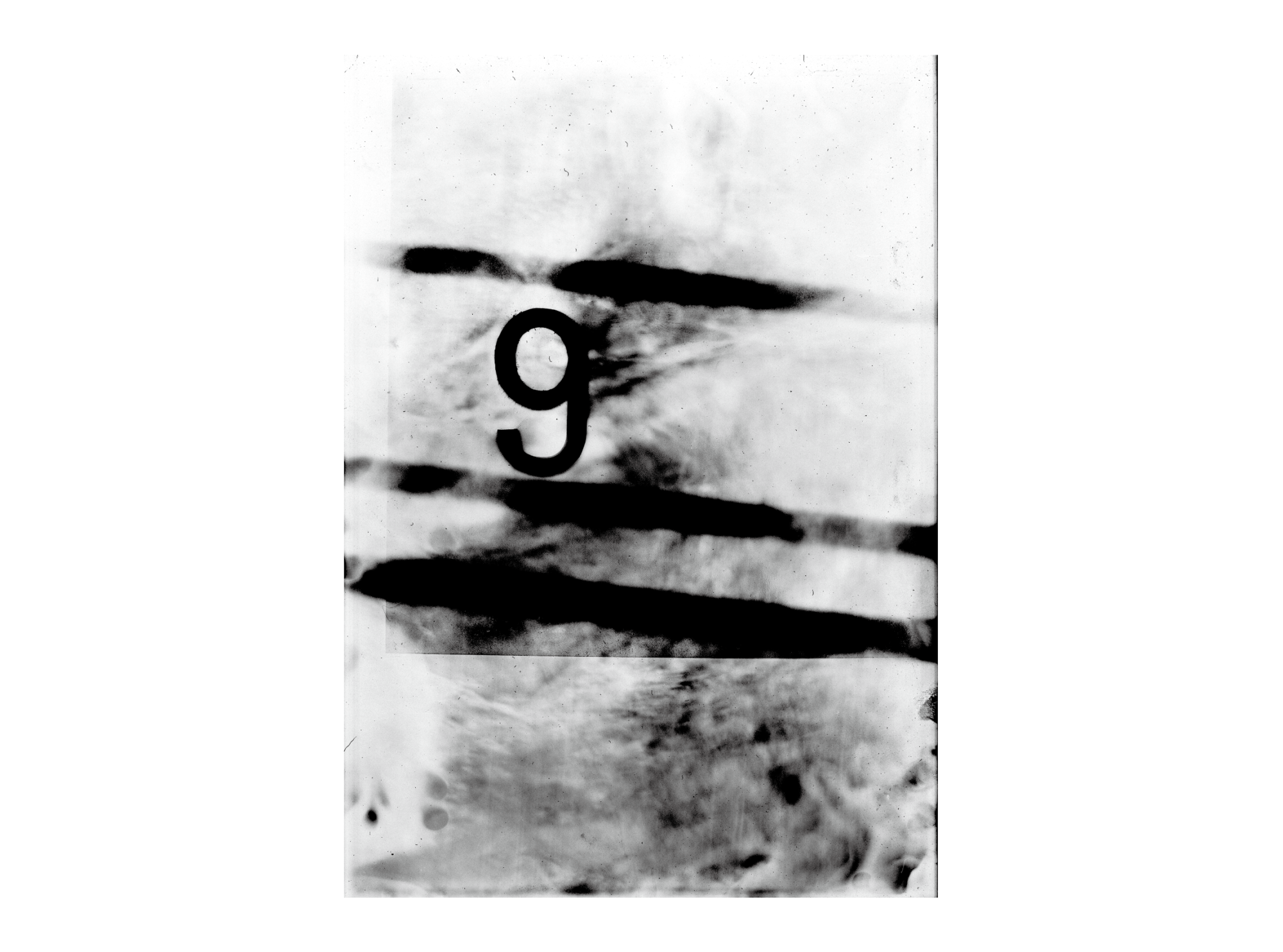
No.9 / 2015 / From “THE NARCISSISTIC CITY” / ©Takashi Homma
Photographed by placing a transparent plate with a “9” sticker in front of the film set up in the pinhole room. The electric wires of the outside scenery are upside down.
THE DESIGN SCIENCE FOUNDATION
PRIZE for LEADING CHARACTER 2024
DSF CULTIVATION AWARD FOR STUDENTS / 5 persons
Hikaru Fukatsu
DSF CULTIVATION AWARD FOR STUDENTS
Density of printed materials
Here, cross sections of newspapers, paperbacks, and weekly magazines are assembled in a wooden frame like a stratum. The density of the printed bundle and that of the ink on the paper merge to form a layered beauty. Its beauty arises from the different directions in which the printed material is cut and stacked.
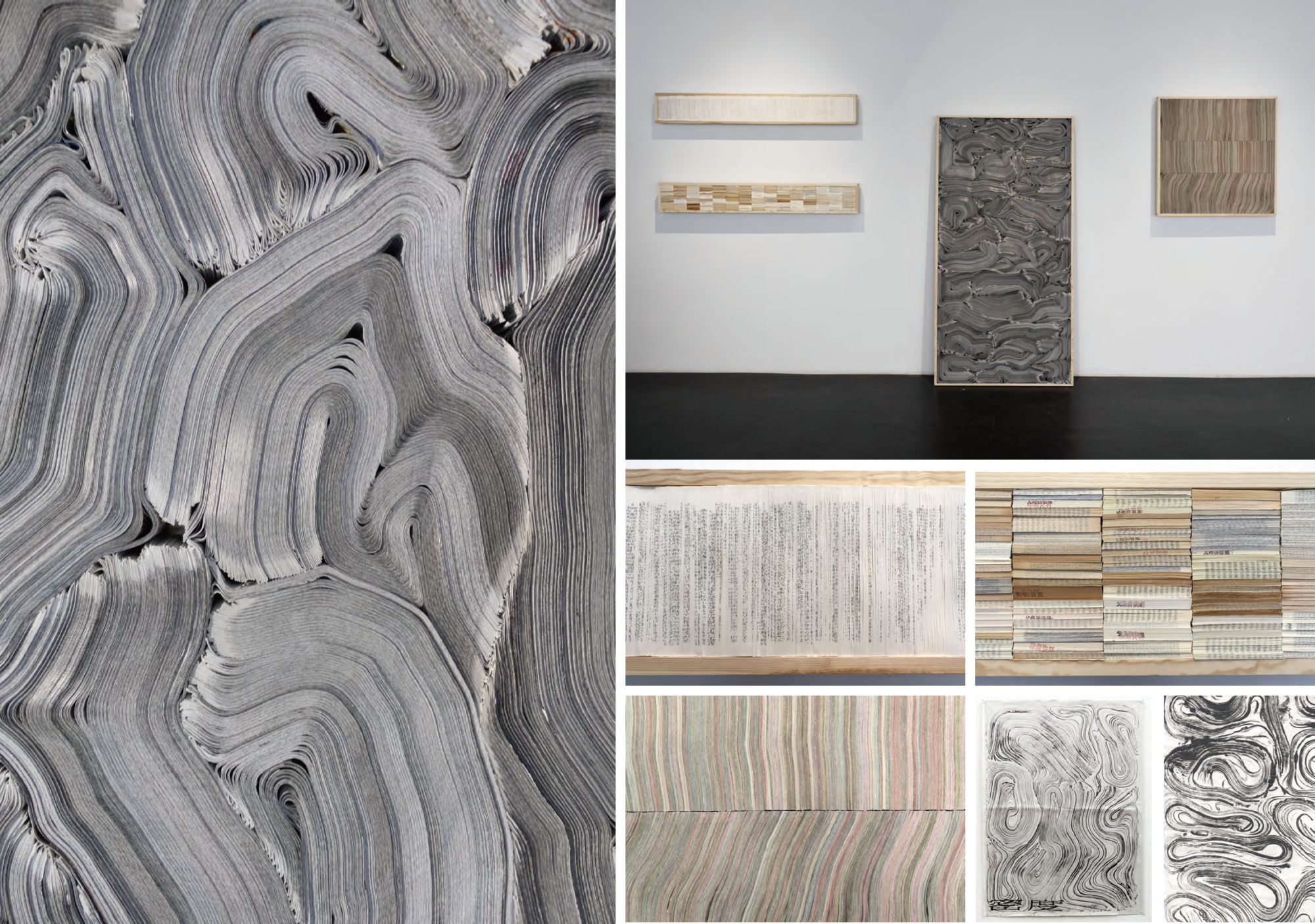
Hiroshi Sugihara
DSF CULTIVATION AWARD FOR STUDENTS
Strolling
An installation of a small box that keep rolling slowly. The box rises against gravity, changes angles maintaining an unstable posture, and lands slowly without collapsing. Its movements, which ignore the laws of physics, look like computer graphics, but at the same time, the way it moves against gravity evokes intentions like that of a living organism.
Riku Kihira
DSF CULTIVATION AWARD FOR STUDENTS
Sand Printing
One of the natural formations, the dunes are sparsely rained on and blown by the wind, forming a gently sloping terrain that resembles a desert. By modifying parts of natural phenomena, the creator explores the possibility of forms that nature has not yet calculated, while using the laws of nature.
He developed a method of modeling sand structures by utilizing the local resources of the beach and 3D printing equipment. Specifically, the project is as follows. Sand structures are formed using beach sand and seawater with 3D printing equipment and 3-axis CNC equipment. Then, he designed a pathway to supply water to the sand and controlled rainfall. This method adds artificial manipulation to the natural forms created by the rain falling on the ground and the wind blowing, and sculpts new “less-than-natural” forms. They continue to transform in their natural environment and through interaction with visitors.
Jinyu Meng
DSF CULTIVATION AWARD FOR STUDENTS
SLIT-STUDIO
Slit-Scan is a work that aims to make photography technology available as a tool to everyone.
This filming technique was invented by John Whitney in 1958, when digital technology did not yet exist. With this technique we can perceive the contours and shape of objects as they change over time by continuously merging images taken through a slit. The designer has realized slit-scan photography on a smartphone by using the Metal Shader API provided by iOS to create a mechanism for processing data from the camera in real time.
Yuma Ishii
DSF CULTIVATION AWARD FOR STUDENTS
Research and creation of dyeing expression based on yuzen technique
These works were created by dyeing based on the hand-painted yuzen technique. In yuzen, the design or preliminary sketch is considered an important process, but the creator’s approach is different. He does not use any designs or preliminary sketches, but insists on improvising and placing antistaining paste from one corner of the cloth to another. Then, using a long, thin brush, he inserts the dye according to his senses. By this method, he achieves a sensuous and precise gluing and coloring process that does not rely on a design.
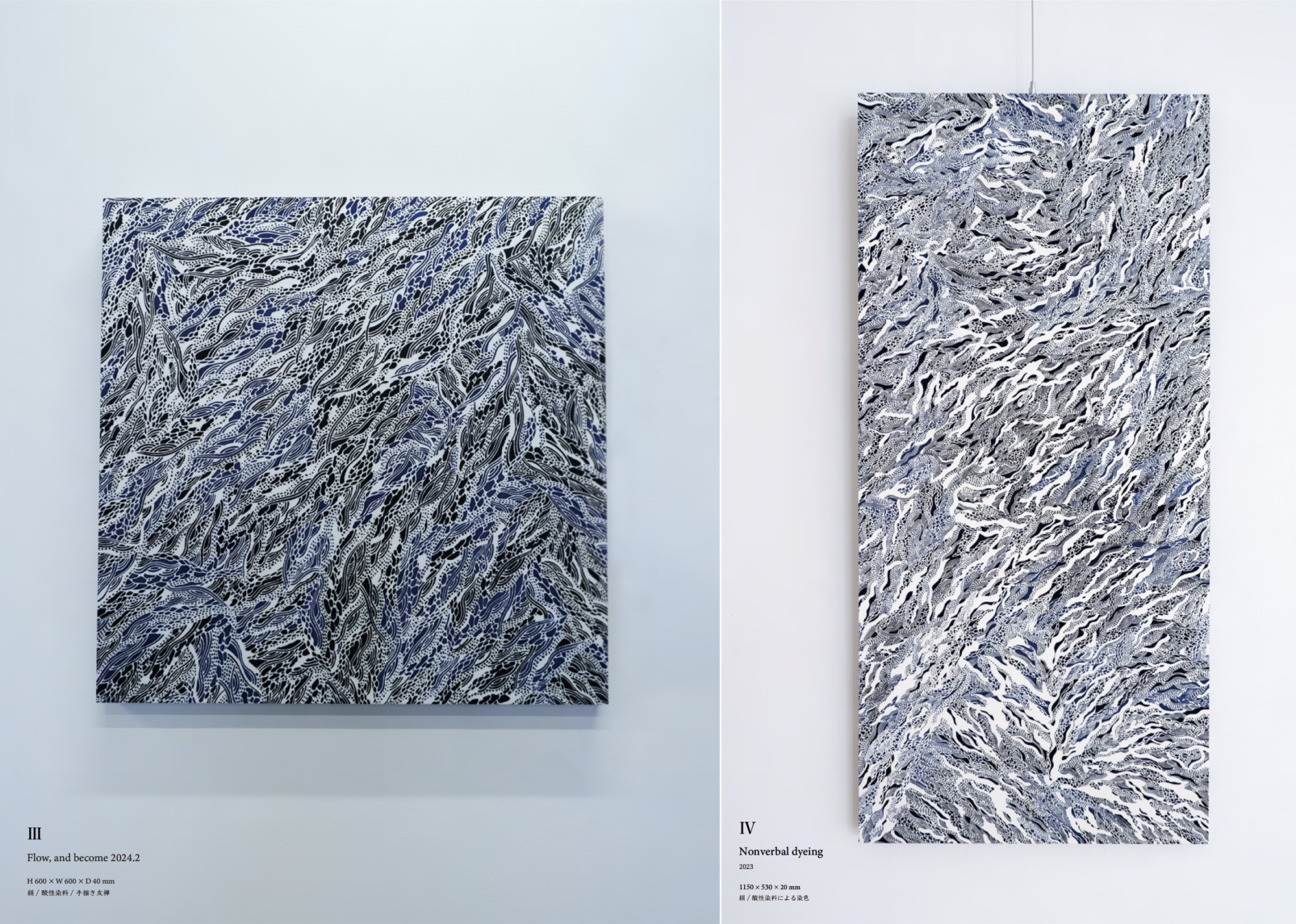
SELECTION COMMITTEE MEMBER
Naoto Fukasawa, Masato Sasaki, Kaoru Mende, Katsuhiko Kushi, Nobutaka Matsuo, Katsuyuki Toritani, and Yugo Nakamura.
